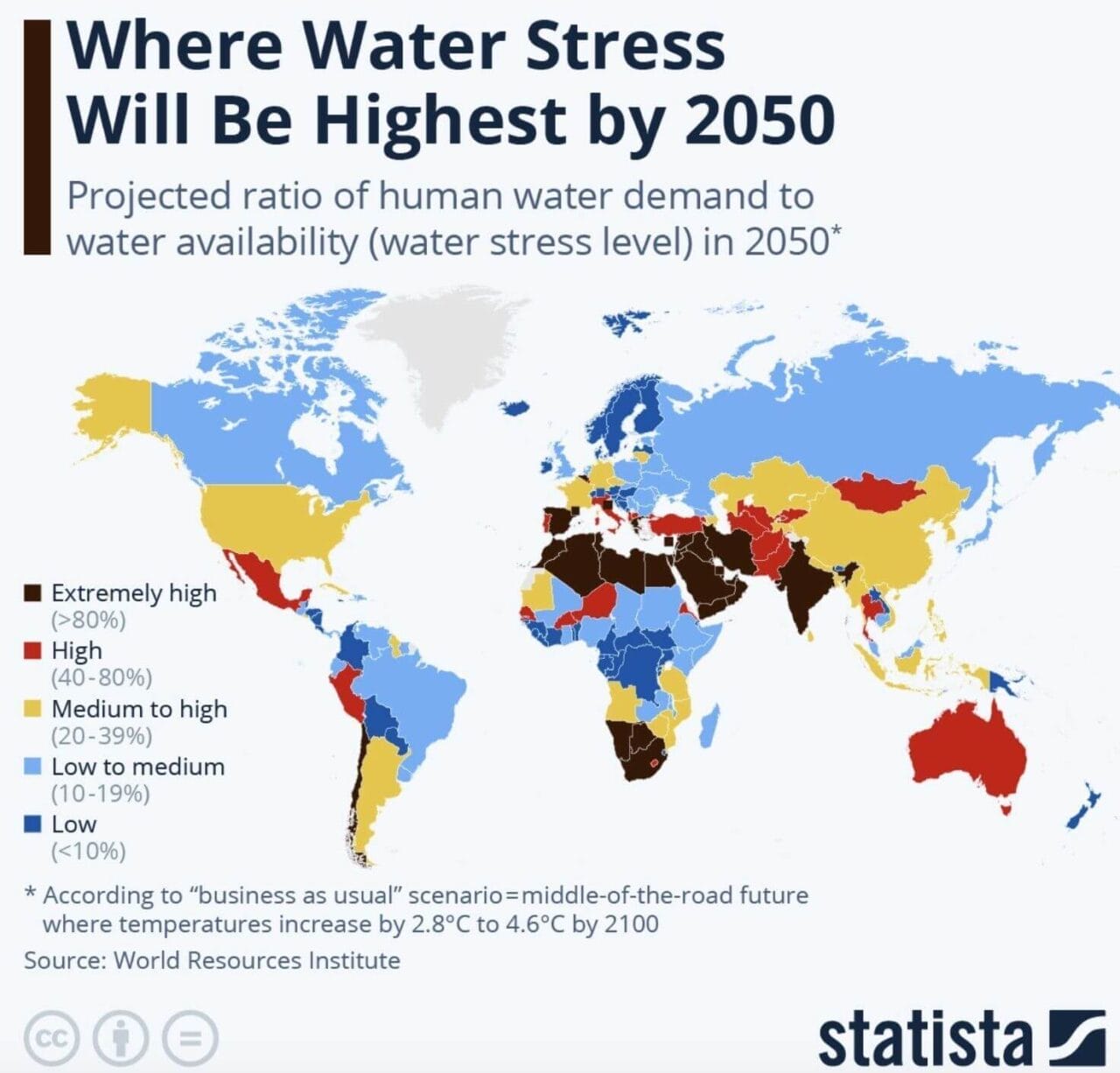For years, migration patterns in Europe have followed a clear East–West trajectory. But globally, a different dynamic is gaining momentum: South–North migration, driven not just by economics, but by two powerful, intertwined forces: demographics and water stress.
Water stress is emerging as a key driver of global change, influencing everything from labor markets to geopolitics. Regions with rapidly growing populations and limited freshwater are under increasing pressure, with serious implications for social stability and mobility.

Consider the demographic projections for water-stressed countries by 2050:
- Pakistan: 240M → 403M
- India: 1.4B+ → 1.67B
- Egypt: 112M → 160M+
- Iran: 89M → 105M+
- Ethiopia: 126M → 205M
Access to drinking water is no longer just a development issue—it’s a migration issue. The World Bank estimates 216 million people could become internal climate migrants by 2050, many driven by water scarcity.
Even wealthier countries like Spain, Italy, Greece, Cyprus, and Malta are investing in desalination and urban resilience as water supplies tighten. Over time, internal migration may shift toward cooler, wetter, more livable regions.
As the world warms and water becomes more scarce, we must ask:
Is water becoming the new oil—not just in value, but in the way it shapes the global future?

